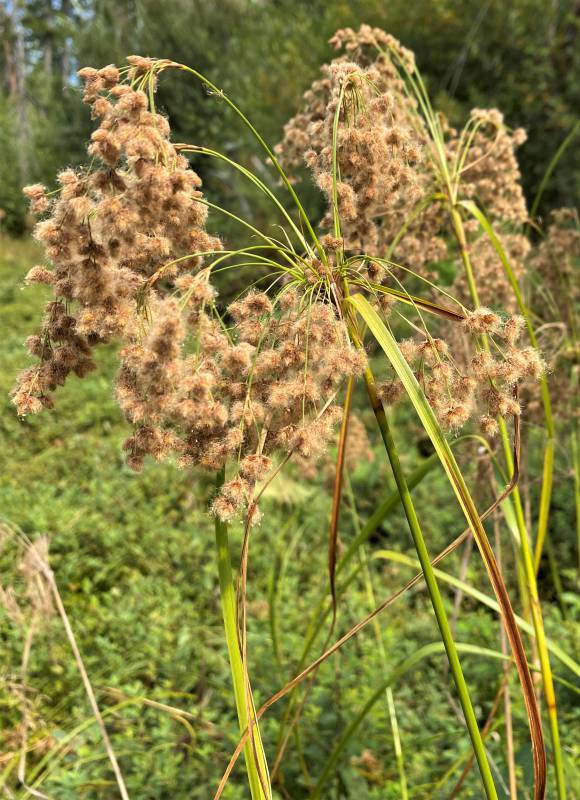Hosted by the University of Washington Herbarium, Burke Museum
Publication: Enum. Pl. 2: 170. 1837.
Origin: Introduced from eastern North America
Herbarium search: CPNWH
Notes: Pacific Northwest populations are recently expanded and many new populations are found on roadsides, all suggesting a recent introduction from eastern North America and not a native species..
FNA23: "Scirpus cyperinus is extremely variable. A form common in the northern part of its range, south to Iowa, northern Ohio, Maryland, and (in the Appalachians) North Carolina and Tennessee, has bases of the involucral bracts and the involucels blackish, the spikelets sessile or nearly so in glomerules, and the scales relatively short, ovate, and brownish. This form has often been treated as S. cyperinus var. pelius. A more robust southern form, extending north to southern Missouri and Illinois, Kentucky, Virginia, and (along the coast) New Jersey and Massachusetts, has the bases of the involucral bracts and the involucels reddish brown, the spikelets mostly solitary, and the scales relatively long, narrowly elliptic, and reddish brown. This form has often been treated as a distinct species, S. rubricosus (or under the illegitimate name S. eriophorum Michaux). These two morphologies intergrade so extensively that it is not practical to recognize them taxonomically at any rank.
Scirpus cyperinus often hybridizes with S. atrocinctus and S. pedicellatus, forming hybrid swarms. Some plants appear to have characteristics of all three species; the names Scirpus atrocinctus var. grandis Fernald and S. atrocinctus forma grandis (Fernald) D. S. Carpenter are based on such a specimen."
Last updated 11/19/2023 by David Giblin.

